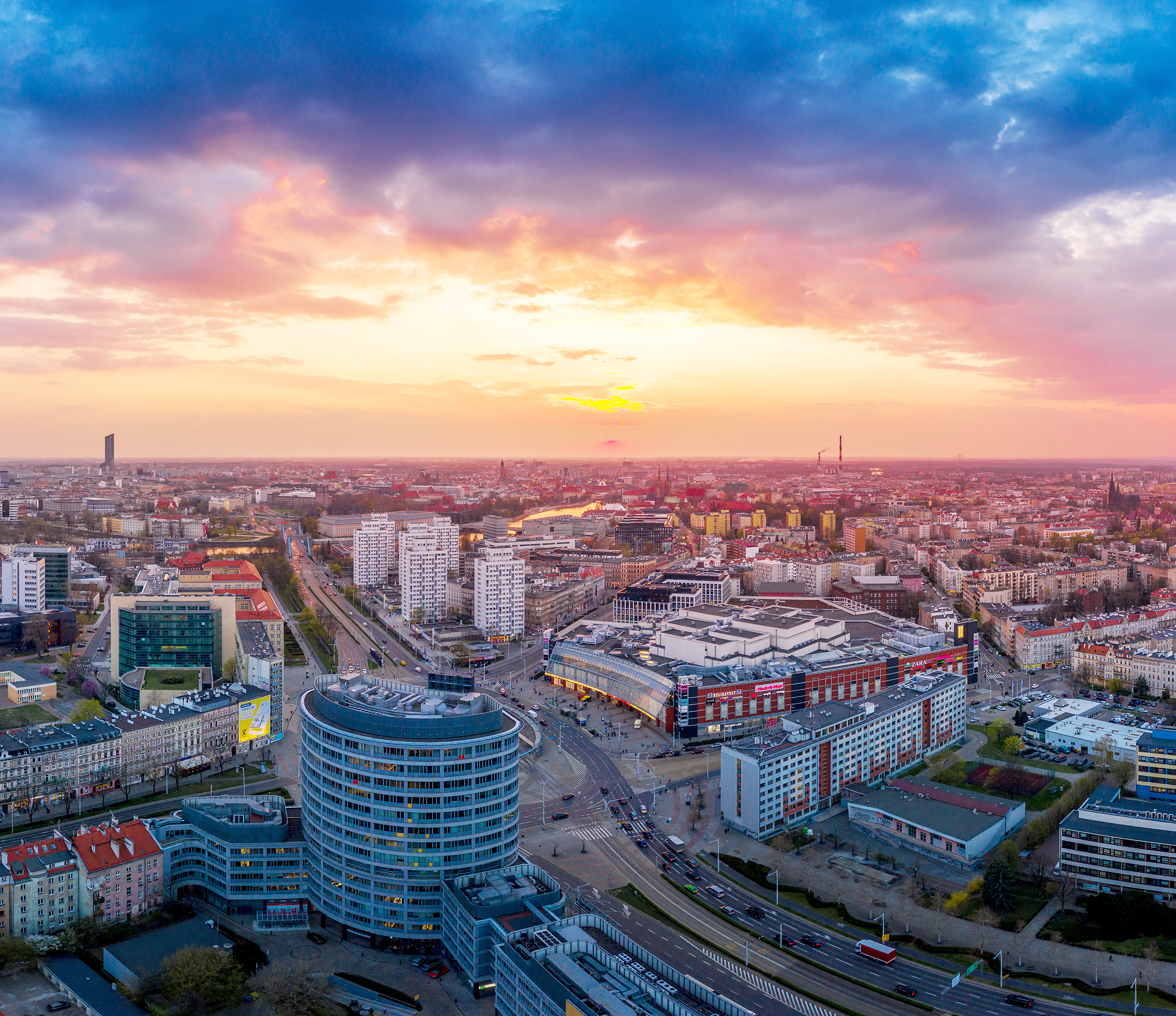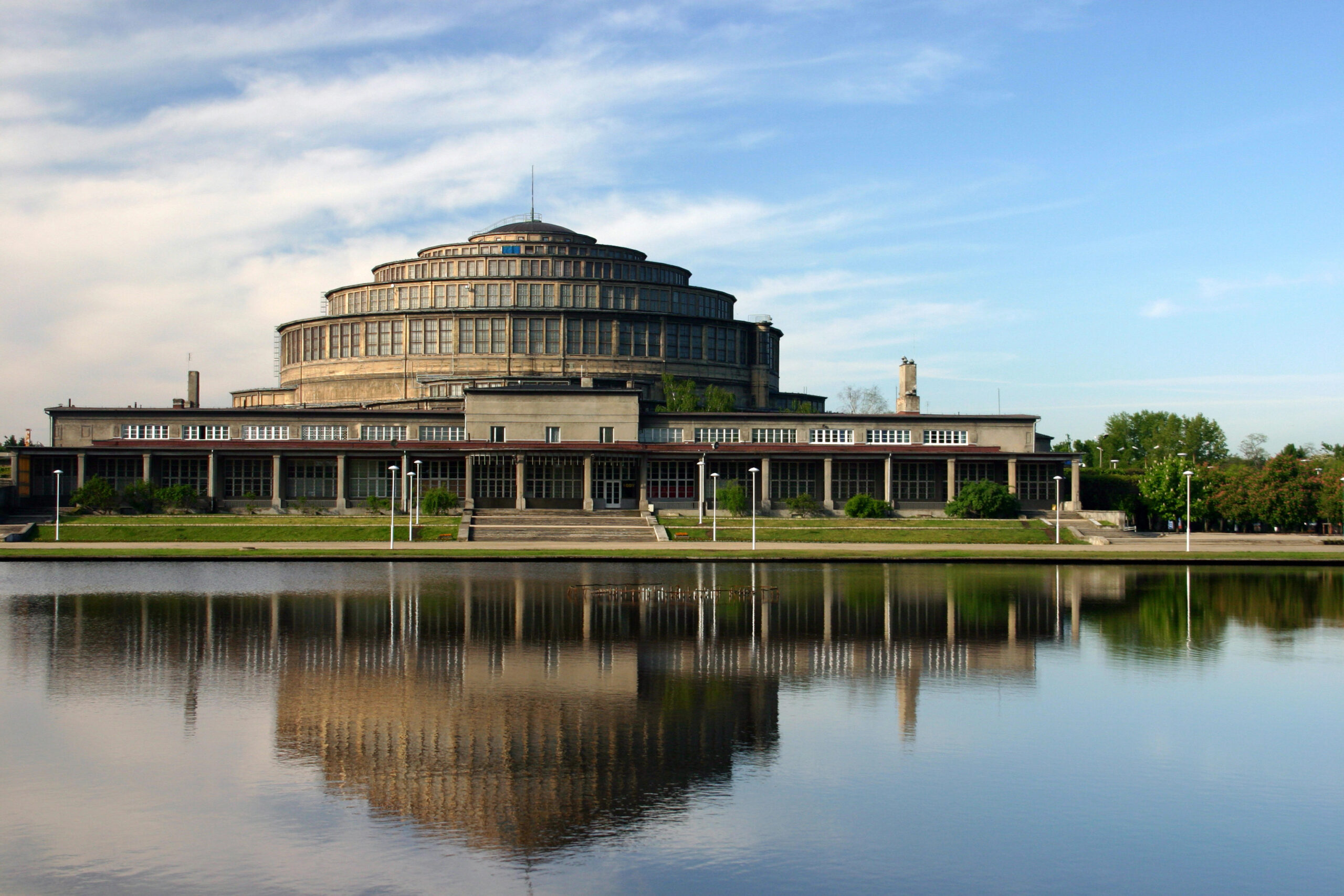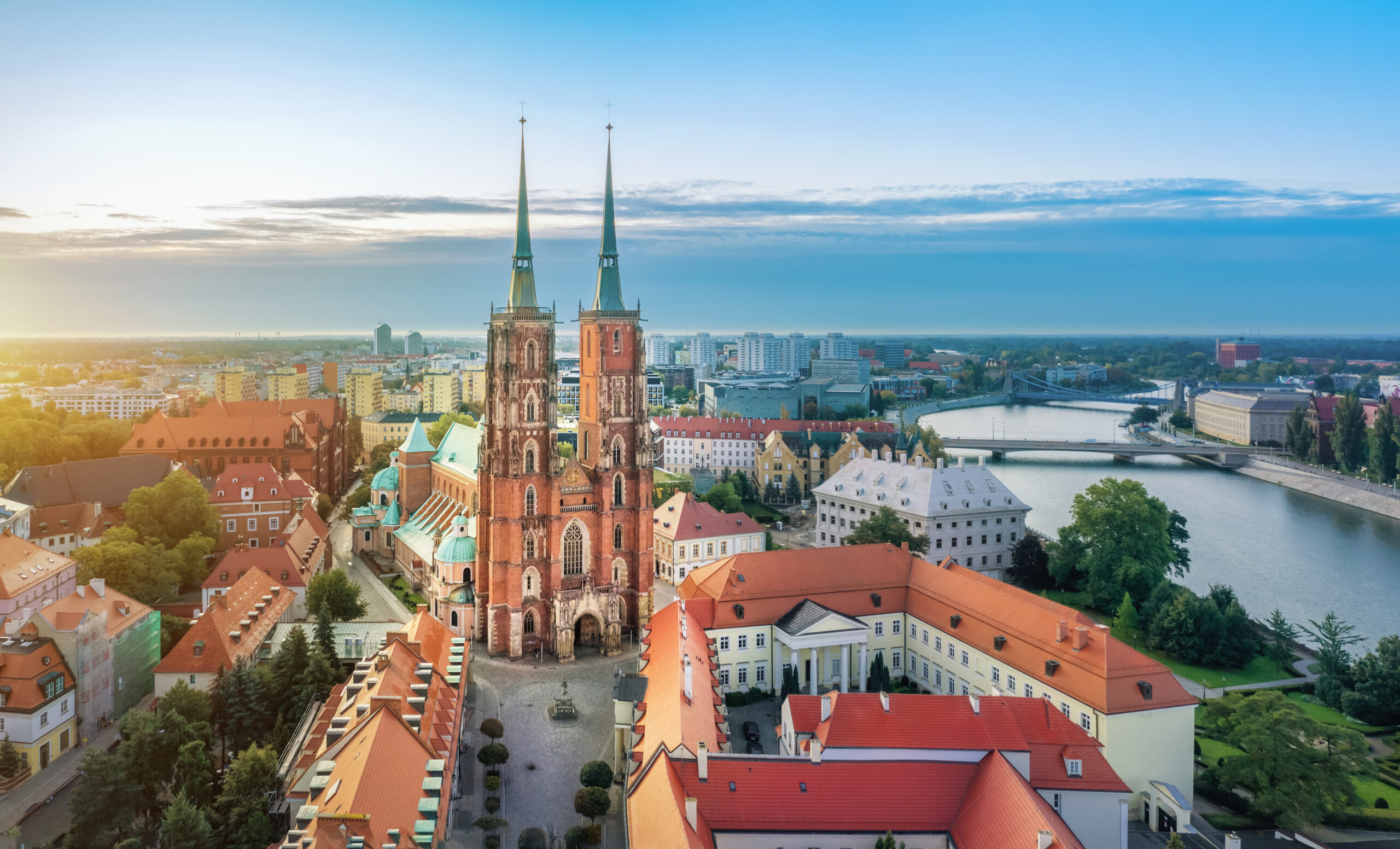Wrocław
Wrocław is a bustling and energetic metropolis – a town featuring 12 islands and 112 bridges, situated in the south-west of Poland, at the foot of the Sudetes. It is a dynamic centre of economic, scientific and cultural life – a place on earth for more than one million inhabitants. As a matter of fact, Wrocław is one of the most beautiful and oldest Polish towns – a witness to the history which is today retold by its remarkable monuments: Ostrów Tumski, Panorama of the Battle of Racławice, the Market Square with the Old City Hall and the New City Hall or the Centennial Hall, listed as a UNESCO World Heritage Site – to name but a few places worth visiting. The oldest historical site is Ostrów Tumski with the Cathedral of St. John the Baptist, commonly labelled as the mother of Silesian churches. It is the cathedral where one can listen to the music produced by the largest pipe organ in Poland, whereas the cathedral tower offers an outstanding panorama of the city. It is also worth visiting Ostrów Tumski in the evening and enjoy walking among the gas lights which are still lit by a lamplighter. And while speaking about the panorama, you cannot miss out on Panorama of the Battle of Racławice, which was executed for 9 months (1893-1894) by Jan Styka, Wojciech Kossak and some other painters. The monumental masterpiece, 15 metres high and 114 metres wide, is the largest painting to be found in Poland. Thanks to the combination of the oil painting, perspective, decorative components and special illumination, the artists managed to achieve the three-dimensionality effect in a masterly fashion – consequently, viewers gain the impression of being inside the picture.

Other places worth visiting while having a sightseeing tour around Wrocław are the rotunda and atmospheric historic tenements surrounding the Wrocław Market Square, one of the largest old-town markets in Europe, featuring the Town Hall, which is simultaneously the tallest (66 metres) and the oldest in Poland. Plenty of the monuments and places in Wrocław are referred to as ‘the most’: the oldest, the largest or the most famous. The Centennial Hall, mentioned previously, is definitely one of such places since it is regarded as the symbol of the town. Built in 1911-1913, it was quite an exceptional structure for those times, considering its height of 42 metres and the fact that it was covered by a reinforced-concrete cupola with an inner diameter of 67 metres. Moreover, the Centennial Hall also features the Four Domes Pavilion, which previously housed the Wrocław Feature Film Studio and currently accommodates one of the most impressive and richest collections of the Polish contemporary art. Another attraction which is adjacent to the Centennial Hall is Wrocław Multimedia Fountain – yet another time it is one of the biggest fountains in Europe.

It must be mentioned that Wrocław boasts the world’s only themed oceanarium devoted to exhibiting the fauna and flora of one continent only – Africa. Although the facility itself is modern and ensures unforgettable experiences thanks to its huge aquariums, yet again it is situated in another site that can be labelled as ‘the most’ – the oldest zoo in Poland.
Furthermore, Wrocław is famous for its dwarfs, which can be encountered practically at every single corner of the town. The small 30-centimetre tall figurines made of cast bronze peek at strollers and passers-by from the pavements, steps and window sills. Currently, there are almost 400 dwarfs around Wrocław and they have become a recognisable symbol of the town.
Wrocław also appears to be a thriving academic centre with its numerous centuries-old universities and academies, including the University of Wrocław (established in 1702), Wrocław University of Science and Technology (a co-organiser of CETEF’22), Wrocław Medical University, the Eugeniusz Geppert Academy of Fine Arts in Wrocław, the Karol Lipiński Academy of Music, Wrocław University of Environmental and Life Sciences and Wroclaw University of Economics and Business.
On top of that, Wrocław is undoubtedly a cultural centre. Many prestigious cultural events and festivals could find a safe haven here. Jazz nad Odrą Festival, Stage Songs Review and Thanks Jimi Festival are noteworthy in respect of music festivals, whereas New Horizons Film Festival and KAN Amateur and Independent Film Festival represent the most recognisable film festivals.
Finally, it is worth pointing out that many important conferences, congresses and international events take place in Wrocław. It is
here that art lovers, enthusiasts of numerous music festivals, theatre festivals, film festivals and literary festivals meet and it is obviously Wrocław where the participants of CENTRAL EUROPEAN TECHNOLOGY FORUM (CETEF’22) will gather for the second time in 2022.
For obtaining more information useful while sightseeing Wrocław please visit the website: visitwroclaw.eu.

Partners





























